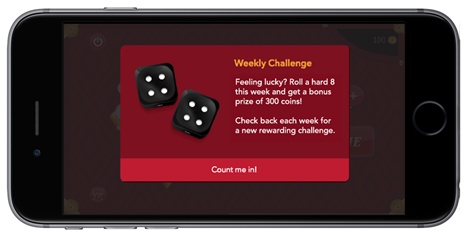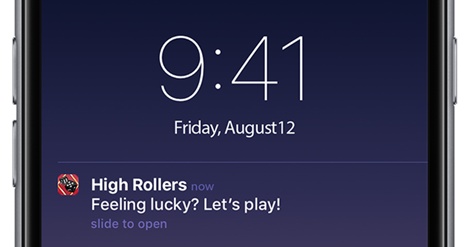Brad Schliesser is Director of Technology Evangelism at AdColony.
For many mobile developers, communicating with users is an aspect of the business that often gets put on the backburner.
Compared to the day-to-day code updates, app store submissions, bug squashing, user acquisition and general operations; messaging users directly can often feel like a minor task.
Don’t underestimate the impact a well-thought message can have on your bottom line, though.
In fact, a recent test we conducted for a mobile game publisher found that users who were exposed to in-app messaging were nearly eight times more likely to make an in-app purchase than users who weren’t.
The result? The publisher enjoyed a 51% increase in ARPDAU while simultaneously improving user retention.
So why is in-app messaging so effective? To truly understand the impact simple messaging can have on an individual user, we need to take a step back from the small screen for a moment, and examine the impact messaging has in traditional businesses.
If you’ve ever worked in the retail or service industry as I did, you were probably taught to greet customers when they enter the store, begrudgingly acquiesce to small talk and say goodbye when they left.
How customers are treated and their first impressions directly influence brand sentiment, conversion rates, and retention.
Of course, there’s more to it than small talk or fulfilling a “retail responsibilities” checklist: demeanour with shoppers makes an impression on them.
Staff are more than sales clerks; they are brand ambassadors whose interactions with customers serve as personalised representations of the store, the brand, and the products for sale.
How customers are treated and their first impressions directly influence brand sentiment, conversion rates, and retention. In fact, customers are willing to spend up to 20% more on purchases if they receive a higher level of service.
However, if their experience is poor, 80% of consumers will share their negative experiences with people they know. This is why major brands such as Apple, Ritz-Carlton and Virgin America require associates to “approach customers with a personalised, warm welcome.”
How Does This Apply to Mobile?
Mobile apps don’t have the familiar trappings of a brick and mortar retail environment.
There’s no front door, generally no personal interaction and transactions are self-serve experiences. Even so, it is possible to make a lasting impact on your users (and the success of an app) by implementing a messaging solution that allows you to make timely, relevant and personal communications.

For instance, a recent Kahuna Mobile Marketing Index found that users who opt-in to receive push notifications retain 200% better, provided that the messages are relevant to their needs. Similarly, our internal testing for publishers leveraging Compass messaging tools have shown similar results for multiple message formats.
By targeting messages to the right user at the right time, you can notify potential monetising users of store specials, advise avid users to in-app events, and help a frustrated user at risk of churning. You can even be as direct as welcoming them to your app and thanking them for installing.
There are two primary methods of communication when it comes to mobile apps: push notifications and in-app messages.
Reaching Out with Push Notifications
Push Notifications are messages typically utilised to communicate with players when they are not currently using your app in the foreground.
Just like retail stores, caution and restraint are good practices when it comes to in-app messages.
Unlike in-app messages, users must opt-in to push notifications for a given app. To entice users to enable push notifications, messages must be timely, informative, and relevant. Think of push notifications a bit like breaking news, and consider what’s important to the user:
- Did they run out of energy in a prior session and it is now refilled?
- Is there an important content update in the app that may interest them?
- Have you not seen the player for an extended time and want to inform them of a reward for coming back?
While push notifications are good for informing users of updates while they’re away, it does not necessarily build a relationship with them.
Embracing Users with In-App Notifications
In-app notifications are delivered to the player while they are playing the app. Simple, right?
Since a user is already in the app, in-app notifications are the most direct method with which to create meaningful communications with your users. They can welcome new players to your game, notify users of special events or IAP promotions, or provide rewards to players.

Rewards are a whole other aspect of player engagement and loyalty, but boiled down, developers can grant rewards either for achieving something in-game or simply for being a loyal app user.
Making Engagement Count
Just like retail stores, caution and restraint are good practices when it comes to in-app messages.
Very few consumers want to field multiple notifications in one session (Here’s something on sale! Would you like to pre-purchase a new item? Would you like to apply for our in-store credit card?) so take a moderate approach to these communications.
While users can’t opt-out of in-app messages, just like a retail store, they can definitely choose to go somewhere else if the experience is awful, even if they otherwise love the app or product.
Restraint, common sense, warmth, and making things feel personal are the key to communications with your app’s consumers.
Although mobile provides a different type of storefront, as a developer, there still exists the potential to have a lasting relationship with your users. With lasting relationships, you can convert those players from browsers, to buyers, to regulars.





















